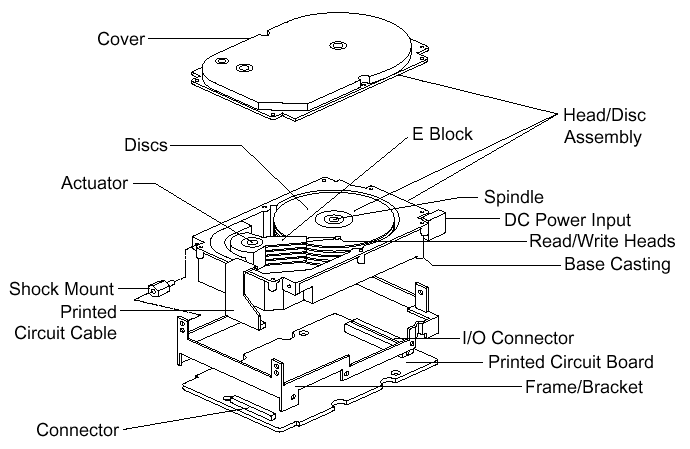In the current fast-paced tech landscape, the continuous evolution of computer components often creates a trail of excess parts that can be both a goldmine and a fount of confusion. As new models hitting the market consistently, numerous components are still perfectly operational and can be reused, refurbished, or reused. This not just helps reduce electronic waste while also provides smart buyers an chance to save money as they constructing or enhancing their setups. Regardless of whether you're a veteran tech enthusiast or a casual user, understanding the ins and outs of purchasing surplus computer parts can result in significant cost reductions and an environmentally conscious method to tech.
Navigating the realm of surplus components requires insight and judgment, especially when it comes to assessing quality and compatibility. Ranging from GPUs to motherboards, knowing the key features can make a considerable impact in your purchase experience. Through this detailed guide, we will examine the essential factors to consider when shopping for excess computer parts, offer tips on spotting high-quality items, and emphasize the optimal strategies for ensuring you get excellent deals without compromise. Join us as we explore the details of surplus computing components and uncover how you can make informed decisions that benefit your finances and the environment.
### Buying Guide for Surplus PC Components
As you're venturing into the realm of excess computer parts, it's essential to understand what you’re looking for to make wise choices. Begin with a clear grasp of your setup needs and compatibility requirements criteria. All components fit all configurations, so analyzing requirements for your motherboard, CPU, and additional components will save you effort and expenses. Compare what try these out discover against your current hardware to guarantee a seamless upgrade or substitution.
Afterward, evaluate the condition of the components you are evaluating. search for signs of wear and tear, such as scuffs or rust, especially on PCBs and plugs. You should also ask about the background of the components, like whether they were previously used in high-demand environments or if they have been tested for performance. Trustworthy sellers often offer guarantees or assurances, which are good signs of reliability and trustworthiness.
In conclusion, consider the cost and accessibility of excess parts. While you may find appealing deals, it’s wise to compare costs across multiple vendors to ensure you're not paying too much. Keep computer surplus store out for certifications that confirm the standard of the components. Understanding the market can help you identify real deals while steering clear of fraudulent goods. Whether you're enhancing an old system or constructing a new setup from scratch, being an educated buyer can lead to considerable savings and a fulfilling tech journey.
Assessing Condition and Functionality
When acquiring surplus computer parts, assessing their condition and functionality is important to confirm you get the optimal return for your purchase. Begin by evaluating the actual condition of the parts. Look for indicators of use, rust, or defects that may impact functionality. Items like PSUs and mainboards can have distinct signals of previous use, so it is essential to inspect them closely for any concerns that could result in issues down the line.

It’s also important to evaluate the details of unused parts. For items like CPUs and graphics cards, make sure they meet the functional requirements for your targeted application. Comparing them against updated models can help you decide if the excess choice will deliver sufficient service. Additionally, check for fit with your present hardware, as mismatched components can lead to poor performance or even computer failure.
In conclusion, think about the credibility of the provider and any warranties provided. Reputable sellers often provide testing data or certs that validate the functionality and condition of their unused parts. Do not hesitate to ask questions or request more details if needed. Evaluating both the tangible state and performance specifications, along with a reputable source, can ensure positive acquisitions in the excess PC market.
Finding Bargains and Ensuring Protection
As you searching for surplus computer parts, it is essential to understand where to look for the best deals. Online marketplaces, local computer repair shops, and excess electronics stores can often provide fantastic opportunities to find high-quality components at reduced prices. Becoming a member of online forums and communities centered around tech can also lead to finding lesser-known sources for surplus parts. Keep an eye on seasonal sales, clearance events, and auction sites where items may be offered below market value.
Securing safety when purchasing surplus components is just as vital as finding a solid deal. Always confirm the reputation of the seller, whether you are acquiring online or in person. Check customer reviews and ratings, and look for sellers who offer warranties or return policies. This added layer of security can protect you against fraud or defective products. Additionally, familiarize yourself the specific features and requirements of the parts you need to confirm compatibility and reliability.
Finally, learn on recognizing genuine surplus parts versus counterfeit ones. Look for recognized brands and ensure proper labeling and documentation. If feasible, check the physical condition of the components before buying. Understanding how to move through the surplus market and being aware of safety will not only help you conserve money but also ensure you build a reliable, high-performing system.
